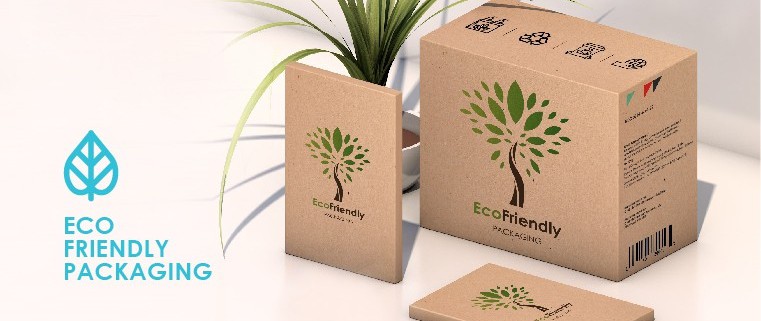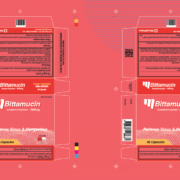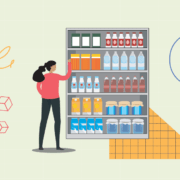Myths versus Facts: Dispelling 4 Myths about Using Sustainable Packaging in a Business
Date: July, 2018 | Category: Proofreading | Author: Mike Malz
Packaging plays a crucial role in influencing customers buying behavior, yet unsustainable packaging can damage the reputation of the firm, causing customers to switch to other brands that employ environment-friendly materials and processes. Unsustainable packaging is detrimental to the environment as it increases the amount of waste that is diverted to landfills, causing increased greenhouse gas emissions.

Sustainable packaging can reduce our ecological footprint at all stages of the product life-cycle, helping the manufacturer and the customer work towards a sustainable future.
With sustainability being the major agenda for almost all countries around the globe, several organizations are introducing sustainable packaging in order to reduce the negative impact on the environment and differentiate themselves from the competition. However, the industry is not devoid of misconceptions that could cause confusion, making it challenging for organizations to work toward a sustainable future.
This post busts the four common myths about sustainable packaging, helping you realize how it can positively affect the environment and boost your firm’s bottom line.
Myth 1: Sustainable Packaging Is An Added Cost
It is a common belief that a majority of product improvements come with a high price tag. Though the cost of sustainable packaging may seem to be high initially, they offer numerous benefits that contribute to the long-term success of a business. Moreover, socially-responsible businesses incorporate the extra cost of sustainable packaging as a part of their business plan, assuring them of profits in the long term.
Adopting sustainable or green packaging enables marketers to connect with their eco-conscious and green-aware consumers, giving them a competitive advantage and boosting their profits. In fact, studies conducted by the Carbon Disclosure Project (CDP) prove that organizations that adopt eco-friendly materials and processes are likely to see a return on investment of 18 percent or more.
Apart from attracting new customers and boosting your corporate image as an environmentally-responsible organization, sustainable packaging also offers innovative designs that can be tailored to the clients’ specific requirements. For instance, waste can be recycled using the paper molding process and converted into customized packaging in order to meet the firm’s requirements for heavy and delicate products at an extremely affordable rate. All this eliminates excessive packaging, making the shipments light and drastically reducing the products’ footprints on the store shelves.
Additionally, in recent times, brands cannot afford to ignore eco-friendly strategies. Consumers increasingly prefer products that protect the environment, reduce global warming, and prevent air and water pollution. Consequently, both emerging and advanced markets are drifting towards ethical and environment-friendly options, pushing the designers, the marketers, and the package development experts to meet the right social and environmental standards.
Most countries also offer special subsidies and incentives for businesses that are looking to join the sustainability bandwagon. Moreover, firms going the sustainable way also enjoy preferential terms and tax rebates from the state and local authorities for setting up an environment-friendly business.
Thus, green packaging actually stands to save your money by reducing material and shipping costs and minimizing waste, playing a persuasive role in helping customers choose your brand over the competition.
Myth 2: Sustainable Packaging Choices are Limited
With the growing concern regarding waste being diverted to landfills and the ensuing greenhouse emissions, customers are expecting firms to use eco-friendly elements in their products. Consequently, packaging firms have come up with several innovative and green materials, namely polylactic acid (PLA), bagasse, recycled paper, and post-consumer polystyrene that can be used to manufacture coffee cups, plates, cutlery, and boxes.
For instance, Evocative, a New York-based biomaterials firm developed a mushroom-based material that can be used as an alternative to plastic packaging. Similarly, Biopac, a UK-based bioplastic developer uses polylactic acid (PLA) from renewable plant sources to manufacture compostable cups and food packaging.
Myth 3: Sustainable Packaging Adds to the Waste
Sustainable packaging is not merely about the eco-friendly nature of the final product. Instead, it means that the packaging material is made from biodegradable, reusable, and environmentally-safe matter and uses energy-efficient manufacturing procedures and health-friendly working conditions for the staff involved.
Sustainable packaging helps firms streamline the packaging design, eliminating unnecessary material from the processes and creating less packaging-related waste. Materials such as biodegradable plastics, plant-based plastics, and recycled products are used to develop sustainable packaging, making it possible for manufacturers and consumers to reduce the amount of waste being diverted to landfills and the ocean floor. For instance, molded fiber products, namely egg trays, fruit-and-vegetable trays, compostable plant holders, and wine shippers are made using biodegradable waste procured from recycling companies and individual households.
Myth 4: Sustainable Packaging Looks Uninteresting
Most commonly, when people think of sustainable packaging they envisage a dull brown or cream paper with visible reused fibers. However, technology has made it possible for design firms to come up with innovative packaging that harnesses powerful aesthetics and are environment-friendly at the same time. Brands such as Nike, Stella McCartney, and Bleach London offer attractive packaging yet use 100 percent eco-friendly material, preserving the planet and its natural resources.
Sustainable packaging helps organizations avoid wasteful practices, preserve natural resources, and reduce environmental issues such as global warming and pollution. This post dispels the most common sustainable packaging myths, enabling you to contribute towards a sustainable future.
Related articles:
Guide to sustainable business packaging
How to avoid waste on the print production floor?









